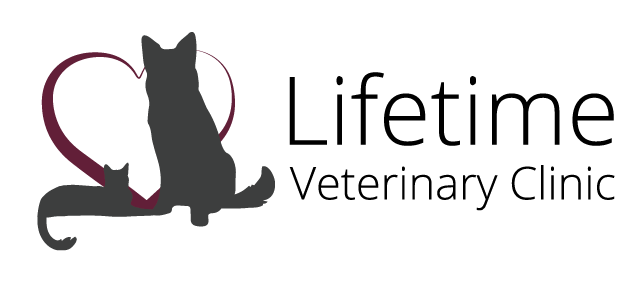Library
-
Enteropathy means any disease of the intestinal system. Protein-losing enteropathy (PLE) is not a specific disease but a group of diseases that cause the loss of proteins from the bloodstream into the gastrointestinal (GI) tract. Symptoms include diarrhea, weight loss, and fluid buildup in areas of the body. Treatment and prognosis are determined by the underlying cause.
-
Enteropathy means any disease of the intestinal system. Protein-losing enteropathy (PLE) is not a specific disease but a group of diseases that cause the loss of proteins from the bloodstream into the gastrointestinal (GI) tract. Symptoms include diarrhea, weight loss, and fluid buildup in areas of the body. Treatment and prognosis are determined by the underlying cause.
-
Pruritus (itching) is a very common skin disorder that can be seen due to allergies or infections affecting the skin. The condition may be resolved if an underlying cause can be identified. Consult your veterinarian about what can be tested for and what treatments can be effective for relief.
-
Pulmonary hypertension means that the peak blood pressure in the arteries of the lungs is much higher than normal. Several abnormalities can lead to high blood pressure in the arteries of the lungs and many of the underlying reasons involve the heart. There are many signs of pulmonary hypertension including exercise intolerance, difficulty breathing with or without exertion/exercise, rapid breathing, coughing, spitting up blood from the lungs, fainting, and more. There are many potential causes of pulmonary hypertension. Several medications are available to treat your cat. Activity may need to be restricted. It is essential to monitor cats with pulmonary hypertension for worsening of clinical signs. Periodic physical examinations, blood pressure monitoring, and ultrasound evaluations of the heart are also important. The long-term prognosis is very guarded for cats with pulmonary hypertension.
-
Pulmonary hypertension means that the peak blood pressure in the arteries of the lungs is much higher than normal. Several abnormalities can lead to high blood pressure in the arteries of the lungs and many of the underlying reasons involve the heart. There are many signs of pulmonary hypertension including exercise intolerance, difficulty breathing with or without exertion/exercise, rapid breathing, coughing, spitting up blood from the lungs, fainting, and more. There are many potential causes of pulmonary hypertension. Several medications are available to treat your dog. It is important to maintain a low-stress environment while any underlying cardiac or respiratory disease is treated and managed. Activity may need to be restricted. It is essential to monitor dogs with pulmonary hypertension for worsening of clinical signs. Periodic physical examinations, blood pressure monitoring, and ultrasound evaluations of the heart will also be important. The long-term prognosis is very guarded for dogs with pulmonary hypertension.
-
Pulmonary thromboembolism describes a condition in which a blood clot lodges in one of the pulmonary arteries, blocking blood flow into the portion of the lung served by that artery. The signs of pulmonary thromboembolism include sudden difficulty breathing, rapid breathing, decreased appetite, fainting, coughing, spitting up blood, weakness, exercise intolerance, and the inability to get comfortable. Sudden death is possible. This article discusses potential causes, treatment, and prognosis.
-
Pulmonary thromboembolism describes a condition in which a blood clot lodges in one of the pulmonary arteries, blocking blood flow into the portion of the lung served by that artery. The signs of pulmonary thromboembolism include sudden difficulty breathing, rapid breathing, decreased appetite, fainting, coughing, spitting up blood, weakness, exercise intolerance, and the inability to get comfortable. Sudden death is possible. This article discusses potential causes, treatment, and prognosis.
-
Pyelonephritis is an upper urinary tract infection. Many dogs have no clinical signs when they have pyelonephritis, although they may have signs of lower urinary tract disease. Pyelonephritis is usually caused by a bacterial infection that moves up the urinary tract from the bladder to the kidneys. There are several developmental, medical, and procedural conditions that increase the risk for pyelonephritis. Antibiotics are used to treat pyelonephritis and are chosen based on testing the urine for bacteria and antibiotic sensitivity. Overall, dogs with sudden pyelonephritis do well and return to normal health with appropriate treatment unless they also have kidney stones, chronic kidney disease, urinary tract obstruction, or cancer in the urinary tract.
-
Pyelonephritis is an upper urinary tract infection involving the kidneys and ureters. Many cats have no clinical signs when they have pyelonephritis, although they may have signs of lower urinary tract disease. Pyelonephritis is usually caused by a bacterial infection that moves up the urinary tract from the bladder to the kidneys. Cats with sudden pyelonephritis do well and return to normal health unless concurrent complications exist.
-
Pyoderma is a bacterial skin infection that can affect all areas of the skin, including skin folds, often seen as red, pus-filled pustules. Treatment may require oral or topical medications and it is always a good idea to practice good hygiene. Pyoderma carries a good prognosis for recovery but recurring or chronic cases may require longer treatment and additional testing to determine an underlying cause.

